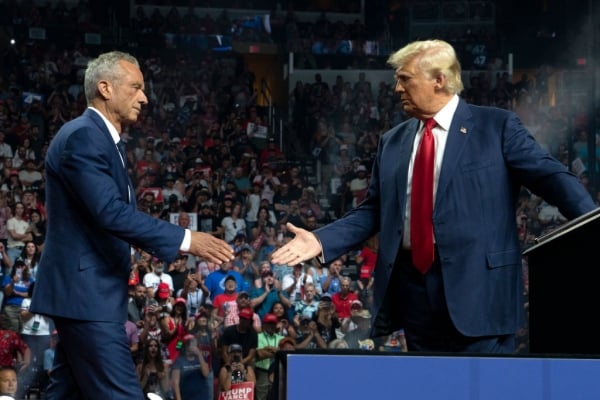After nearly a year’s delay, the Chinese Communist Party (CCP)’s Third Plenum — its economic reform agenda-setting meeting that normally occurs every five years — will convene next week (July 15-18). From press reports and comments from leading economic thinkers, it appears that leaders want to find ways to rebalance center-local fiscal relations and social welfare responsibilities. Local governments are struggling under a heavy debt burden and a mandate to provide critical services with insufficient funding. Global investors are eager to see meaningful reforms that will address long-standing problems (e.g., housing crisis, low consumption, falling foreign investment, etc.) and provide opportunities for them in a more open market-oriented environment. Beijing has promised to “comprehensively deepen reform,” but the scale of the issue and the history of center-local relations suggest the Party cannot resolve this long-term challenge overnight.
Scoping the Problem
The March Government Work Report and the National Audit Office’s recent report called for unspecified fiscal and tax reforms to address local government debt sustainability. Official statistics put local government debt at around $5.6 trillion (40.74 trillion yuan) at the end of 2023, more than 30 percent of China’s 2023 GDP. Local government debt has increased significantly, as they work to generate growth so that they can make good on public service programs. Indeed, local government spending comprises roughly 85 percent of China’s total expenditures, but local governments only retain half of total tax revenue.
How Did This Funding Gap Arise?
In the 1980s — under the classic fragmented authoritarianism model — China had a more decentralized fiscal system. Budgetary reforms saw local governments retaining more of their revenue, with deals negotiated with the central government on how much local governments were obligated to transfer to Beijing. But in the 1990s, China started to recentralize various facets of the government, including lines of reporting authority, cadre appointment, and fiscal/budget authorities. Notably, tax reforms in 1994 and 2002 revised the allocation of tax revenue; the center would now receive 75 percent of value-added tax revenue and 68 percent of corporate income tax revenue. Thus, intergovernmental transfer agreements reversed direction, with the central government having control over financial flows to the local government.
With their tax base reduced but their public service responsibilities largely unchanged (and intergovernmental transfers insufficient), local governments leaned on land sales and property taxes to fund their expenditures. In 2021, land sale revenue provided more financing for local governments than transfers from the central government, and 2006-2014 saw urban infrastructure financed by land-related income (as opposed to government budget allocations) nearly double.
Banking and budgetary reforms in 1995 and 1996 had already cut local governments off from bank loans and domestic and global credit markets. This spawned the use of local government financing vehicles (LGFVs) for subnational governments to access borrowing.
Debt accumulation by LGFVs ballooned, with the highest amount of LGFV bonds coming due this year ($651 billion). At least 35 percent of LGFVs are unable to cover outright the interest on their debts. Local governments and LGFVs, both heavily dependent on land-related sources of income, are challenged by the property slump. Land sale revenue fell by 33 percent from 2021 to 2023. Amid the concentration of fiscal power in the center, local governments need more sustainable income streams.
What this Means for the Third Plenum
Beijing recognized the need to address LGFV and local government debt and took steps to mitigate the property crisis. This kindled hopes of sweeping fiscal and tax reforms (e.g., assuming more expenditure and responsibility for public services, revising taxes to allow local governments to retain more of their revenue) at the upcoming Third Plenum.
But evidence suggests that China watchers should temper their expectations and anticipate incremental changes that build off of existing policy rather than deep reform.
The May program to address the housing crisis has been criticized as insubstantial against the trillions in yuan of debt held by the property sector. Meanwhile, in the tech space, Beijing’s efforts to prevent excess capacity still calls on “new productive forces” and continuation of an industrial model reliant on technological advancement. These “new productive forces” will likely take precedence over a consumption-driven model of growth.
Furthermore, despite seeking new sources of foreign investment as FDI continues to plummet, China has failed to recover global investor confidence. In the lead up to the plenum, Xi again expressed a preference for state-led growth and a more egalitarian approach to wealth distribution under the Mao-era slogan of “common prosperity.”
It may also be that the central government is somewhat distrustful of ceding more fiscal authority to the local government due to concerns about corruption.
While the Third Plenum may not result in the comprehensive reforms investors are optimistic for, it is worth watching to see if it affirms the current direction of China’s economic policies and if it highlights tensions between the center and local governments.





















Discussion about this post